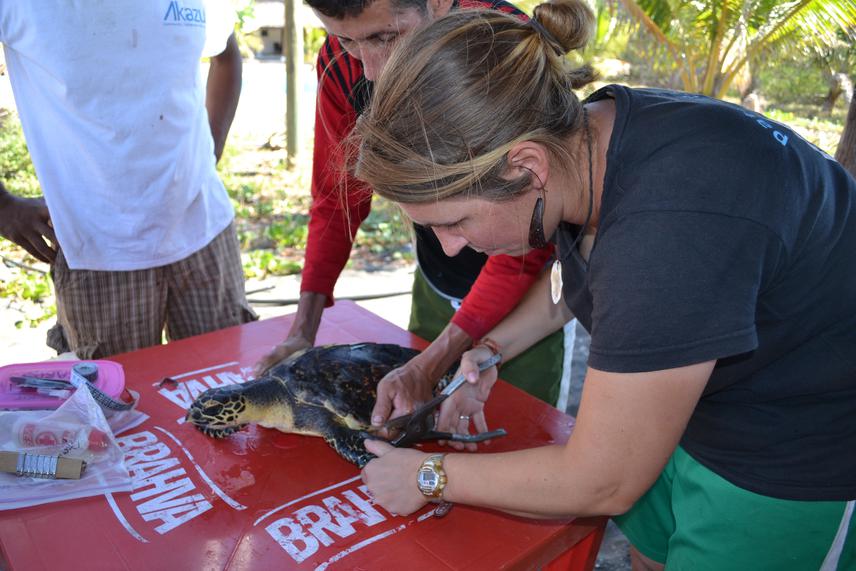Rachel Brittain
The project aims to improve the capacity of Guatemalan coastal inhabitants to develop an effective marine monitoring and reporting network for endangered hawksbill sea turtles.
Hawksbill (Eretmochelys imbricata) sea turtles are extremely rare within the Eastern Pacific (EP) and until recently the species was thought to have been extirpated in the region. Important nesting rookeries have since been identified in El Salvador and Nicaragua. Although hawksbills spend more than 99% of their lives at sea, at present, most recovery efforts focus on researching and protecting hawksbills at nesting beaches. There is a complete void of information regarding habitat use and distribution of hawksbill turtles in marine habitats.

In Guatemala, hawksbill nesting incidences are rare but numerous live strandings and incidental captures in artisanal fishing gear have been reported along the country’s SE coast. It is likely that hawksbills are even more common, yet simply go unreported, due to species misidentification and absence of an appropriate reporting network. All indications support the idea that Guatemala serves as a regionally important foraging habitat for hawksbills highlighting the need to provide training and capacity to develop a Marine Monitoring and Observation Reporting Network which will generate information on spatial distribution for management.
This highly collaborative project will combine international expertise with an extensive network of Guatemalan partners to establish Guatemala’s first Hawksbill Marine Monitoring and Observation Reporting Network. Key to the project will be engaging coastal inhabitants, artisanal fishers, government officials, as well as the general public and international sea turtle community in project activities to raise awareness of the critically endangered hawksbill sea turtle.
The project will cultivate participation of community members and artisanal fishers to facilitate effective recording of hawksbill observations at sea and on land. Collation and analysis of observations will generate much needed baseline data on; distribution, abundance and spatial habitat use of hawksbills in Guatemalan waters. Priority habitats utilised by these sea turtles will also be identified as well as any areas of negative human interaction. Findings will contribute to national and international efforts to recover critically endangered hawksbill sea turtles in the EP region.